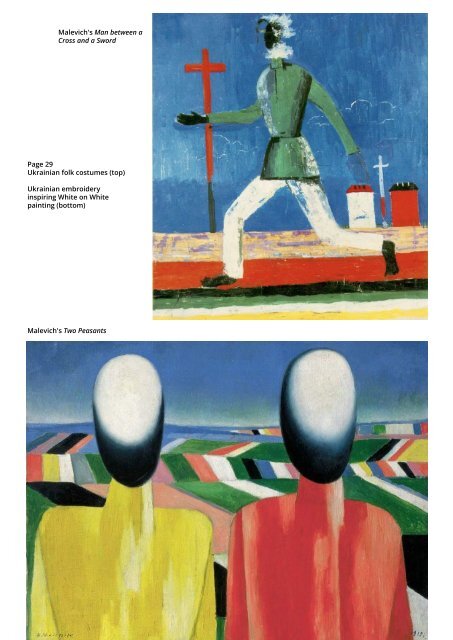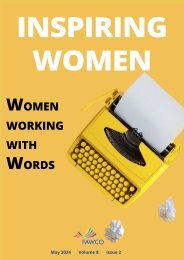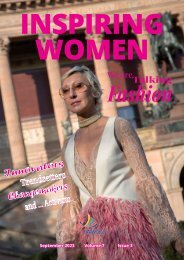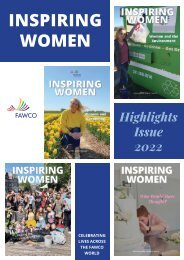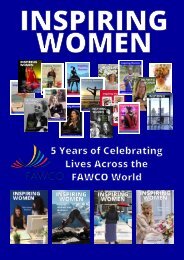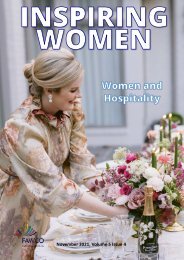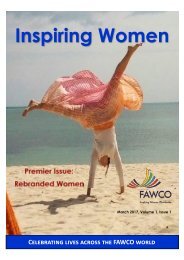Inspiring Women Magazine November 2023
Create successful ePaper yourself
Turn your PDF publications into a flip-book with our unique Google optimized e-Paper software.
Malevich's Man between a<br />
Cross and a Sword<br />
Page 29<br />
Ukrainian folk costumes (top)<br />
Ukrainian embroidery<br />
inspiring White on White<br />
painting (bottom)<br />
For instance, Ukraine’s most noted avant-garde<br />
artist, Kazimir Malevich (1879-1935), was almost<br />
always presented as a Russian. Malevich was<br />
not just born in Ukraine, but also began his<br />
art studies there, kept close contacts with his<br />
Ukrainian family and colleagues, and cherished<br />
Ukrainian culture. He came from a humble<br />
family in the countryside around Kyiv. He spoke<br />
and wrote in Ukrainian, loved to sing Ukrainian<br />
songs, and was deeply fascinated by and knew<br />
Ukrainian folk culture well.<br />
During the mid-1890s, Malevich started to study<br />
art. His teacher at the Kyiv Drawing School was<br />
Mykola Pymonenko, a famous Ukrainian realist<br />
painter. Developing his theory of Suprematism,<br />
a movement focused on the interaction of flat<br />
geometric forms and colors, Malevich closely<br />
cooperated with Ukrainian artists and analyzed<br />
Ukrainian folk art, especially embroidery, with<br />
its hundreds of styles and enormous variety<br />
of patterns. One of the most popular methods<br />
of Ukrainian embroidery is cross-stitching,<br />
which undoubtedly influenced Malevich’s<br />
geometric fantasies.<br />
Malevich's Two Peasants<br />
Malevich’s famous painting White on White (1918)<br />
was likely influenced by the "white on white"<br />
embroidery technique, which has been very<br />
popular in Ukraine. In this painting, a barely<br />
differentiated off-white square is superimposed<br />
on an off-white ground. Malevich’s preoccupation<br />
with embroidery stems from his early exposure<br />
to Ukrainian patterns and symbols on peasant<br />
outfits, Ukrainian folk dolls, Easter eggs, and<br />
icon painting.<br />
Malevich’s paintings of the 1930s, such as the<br />
Peasant Between a Cross and a Sword (or<br />
Running Man), depict the realities of Soviet<br />
Ukraine during the 1932-33 Holodomor<br />
(man-made famine). One of the last photos<br />
of Malevich, taken with his third wife, Natalia,<br />
before his death from cancer in Leningrad,<br />
shows a Ukrainian “kylym,” or woven carpet and<br />
a blanket, which he probably brought with him<br />
from Ukraine. The simplicity of design of<br />
Ukrainian carpets influenced a number of<br />
Malevich’s works (Red Cavalry,1932; The Red<br />
House, c.1930; Composition 3, 1932). His works<br />
28 INSPIRING WOMEN INSPIRING WOMEN 29


